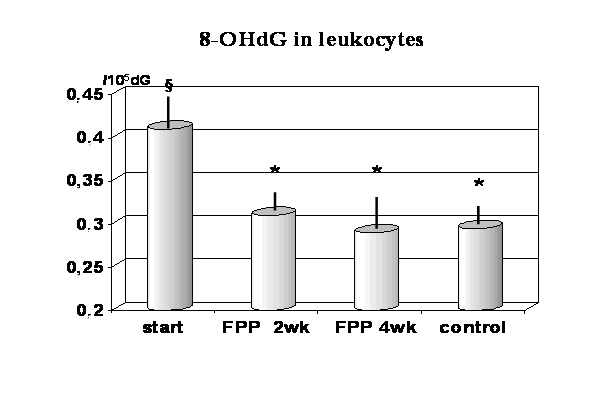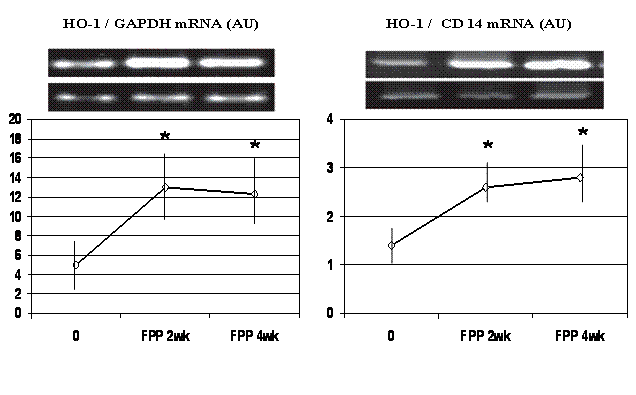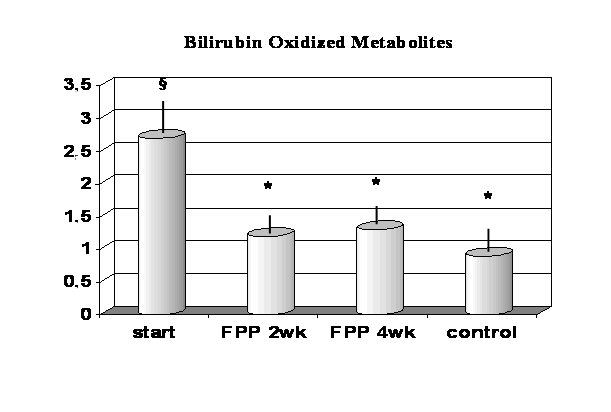Research
REDOX BALANCE SIGNALLING IN OCCUPATIONAL STRESS: MODIFICATION BY NUTRACEUTICAL INTERVENTION
FILE2011
(1)Marotta F, (2)Naito Y, (1)Padrini F, (3)Xuewei Xia, (4)Jain S, (5)Soresi V, (3)Zhou L, (1)Signorelli P, (3)Zhong K, (1)Polimeni A, (3)Chui DH,
(1)ReGenera research group, Milan, Italy;
(2)Immunology Research Institute & Clinic, Nagoya, Japan;
(3)Neuroscience Research Institute, Peking University, China:
(4)Department of Food Science and Human Nutrition, University of Illinois, Urbana-Champaign, USA;
(5)Octopus Scientific Association of Bio- Prevention, Milano, Italy.
There is an increasing evidence that psychosocial stress can be viewed as a system-wide derangement of cellular homeostasis, with heightened oxidative stress and triggered proinflammatory mechanisms.
The aim of this study was twofold: a) to replicate findings that psychological stress increases oxidative damage and b) to determine whether a fermented papaya preparations known to exert a significant protective antioxidant properties could buffer such increases in nuclear DNA damage while also inducing epigenetic protective mechanisms.
Twenty-eight sedentary men and women (age range: 28-52) reported living a stressful lifestyle but with an overall positive attitude were recruited for this study. Chronic diseases as well severe burnout and use of drugs for anxiety constituted exclusion criteria. Subjects were supplemented for 1 month with 9g/day (4.5g twice a day) of a certified fermented papaya preparation. All subjects were submitted a stress and sleep quality questionnaire together with a diet and lyfe style assessment. Blood was collected at 2 and 4 week, erythrocyte and leukocyte were separated to assess redox balance and heme oxygenase-1 (HO-1) gene expression while bilirubin oxidized metabolites (BOMs) were tested in the urine.
Stress individuals showed a significant abnormality of redox status with increased MDA of erythrocyte and increased level of 8-0HdG in leukocyte and BOMs excretion (p<0.05). Nutraceutical supplementation brought about a normalization of such values already at the 2 week observation (p<0.05) together with a significant upregulation of HO-1 (p<0.01).
Taken altogether this study confirm that stressful occupational life per se, without any overt psychiatric illness, may be associated to increased oxidative stress. Supplementation with functional food affecting redox regulation may be part of the therapeutic armamentarium to be considered in this clinical setting.
 Assessment of 8-OH-dG Levels in Leukocytes in stressed subject when supplemented with FPP
Assessment of 8-OH-dG Levels in Leukocytes in stressed subject when supplemented with FPP
§:As compared to controls, stress subjects showed a statistically significant increased level of 8-0HdG (p<0.05) *:while nutraceutical supplementation with FPP brought about a steady state significant decrease within normality (p<0.05). At baseline the level of 8-0HdG was significantly correlated to MDA.
 Assessment of erythrocyte concentration of redox status and MDA.
Assessment of erythrocyte concentration of redox status and MDA.
As compared to unstressed individuals, stressed subjects showed a significant increased level of erythrocyte SOD and MDA and decreased GPX (p<0.05). FPP supplementation showed a significant decrease of MDA at the second week while either SOD and GPX abnormalities remained unchanged. However, at 4-week observation, all parameter returned to normal level under supplementation with the nutraceutical (p<0.01 vs baseline values)
 HO-1 gene expression in PBMC
HO-1 gene expression in PBMC
When tested against GAPDH and CD14, HO1 gene expression in leukocytes appeared to be significantly up-regulated (p<0.01). This effect was already clear at the second week observation and remained unchanged two weeks afterwards.
 Urinary excretion of Bilirubin oxidized metabolites (BOM)
Urinary excretion of Bilirubin oxidized metabolites (BOM)
§:As compared to unstressed controls, urinary excretion of BOMs in stressed individuals showed a significant over two-fold increase (p<0.01). *:Under supplementation with functional food FPP, such values were normalized (p<0.05). There was a significant correlation between BOMs values and respective HO-1 level (r: 0.78, p<0.01) and MDA (r: 0.64, p<0.5) but no significant correlation appeared with other variables tested.
List of the related papers
Year
Name of Papers
2011
2006
